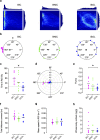Social Eavesdropping in Zebrafish: Tuning of Attention to Social Interactions
- PMID: 26242246
- PMCID: PMC4525141
- DOI: 10.1038/srep12678
Social Eavesdropping in Zebrafish: Tuning of Attention to Social Interactions
Abstract
Group living animals may eavesdrop on signalling interactions between conspecifics in order to collect adaptively relevant information obtained from others, without incurring in the costs of first-hand information acquisition. This ability (aka social eavesdropping) is expected to impact Darwinian fitness, and hence predicts the evolution of cognitive processes that enable social animals to use public information available in the environment. These adaptive specializations in cognition may have evolved both at the level of learning and memory mechanisms, and at the level of input mechanisms, such as attention, which select the information that is available for learning. Here we used zebrafish to test if attention in a social species is tuned to the exchange of information between conspecifics. Our results show that zebrafish are more attentive towards interacting (i.e. fighting) than towards non-interacting pairs of conspecifics, with the exposure to fighting not increasing activity or stress levels. Moreover, using video playbacks to manipulate form features of the fighting fish, we show that during the assessment phase of the fight, bystanders' attention is more driven by form features of the interacting opponents; whereas during the post-resolution phase, it is driven by biological movement features of the dominant fish chasing the subordinate fish.
Figures






Similar articles
-
Brain Transcriptomic Response to Social Eavesdropping in Zebrafish (Danio rerio).PLoS One. 2015 Dec 29;10(12):e0145801. doi: 10.1371/journal.pone.0145801. eCollection 2015. PLoS One. 2015. PMID: 26713440 Free PMC article.
-
Social dominance modulates eavesdropping in zebrafish.R Soc Open Sci. 2015 Aug 26;2(8):150220. doi: 10.1098/rsos.150220. eCollection 2015 Aug. R Soc Open Sci. 2015. PMID: 26361550 Free PMC article.
-
Wasps Use Social Eavesdropping to Learn about Individual Rivals.Curr Biol. 2020 Aug 3;30(15):3007-3010.e2. doi: 10.1016/j.cub.2020.05.053. Epub 2020 Jun 25. Curr Biol. 2020. PMID: 32589910
-
Eavesdropping on heterospecific alarm calls: from mechanisms to consequences.Biol Rev Camb Philos Soc. 2015 May;90(2):560-86. doi: 10.1111/brv.12122. Epub 2014 Jun 11. Biol Rev Camb Philos Soc. 2015. PMID: 24917385 Review.
-
Information and aggression in fishes.Learn Behav. 2004 Feb;32(1):114-21. doi: 10.3758/bf03196012. Learn Behav. 2004. PMID: 15161146 Review.
Cited by
-
The zebrafish subcortical social brain as a model for studying social behavior disorders.Dis Model Mech. 2019 Aug 6;12(8):dmm039446. doi: 10.1242/dmm.039446. Dis Model Mech. 2019. PMID: 31413047 Free PMC article. Review.
-
Perceptual mechanisms of social affiliation in zebrafish.Sci Rep. 2020 Feb 27;10(1):3642. doi: 10.1038/s41598-020-60154-8. Sci Rep. 2020. PMID: 32107434 Free PMC article.
-
Adult zebrafish in CNS disease modeling: a tank that's half-full, not half-empty, and still filling.Lab Anim (NY). 2017 Oct 6;46(10):378-387. doi: 10.1038/laban.1345. Lab Anim (NY). 2017. PMID: 28984854
-
Modelling ADHD-Like Phenotypes in Zebrafish.Curr Top Behav Neurosci. 2022;57:395-414. doi: 10.1007/7854_2022_343. Curr Top Behav Neurosci. 2022. PMID: 35507286 Review.
-
The epigenetic impacts of social stress: how does social adversity become biologically embedded?Epigenomics. 2016 Dec;8(12):1653-1669. doi: 10.2217/epi-2016-0075. Epub 2016 Nov 21. Epigenomics. 2016. PMID: 27869483 Free PMC article. Review.
References
-
- Danchin E., Giraldeau L.-A., Valone T. J. & Wagner R. H. Public information: from nosy neighbors to cultural evolution. Science 305, 487–491 (2004). - PubMed
-
- Oliveira R. F., McGregor P. K. & Latruffe C. Know thine enemy: fighting fish gather information from observing conspecific interactions. Proc. R. Soc. B Biol. Sci. 265, 1045–1049 (1998).
-
- McGregor P. K. Signalling in Territorial Systems: A Context for Individual Identification, Ranging and Eavesdropping. Philos. Trans. R. Soc. B Biol. Sci. 340, 237–244 (1993).
-
- Peake T. M. in Anim. Commun. networks 13–37 (Cambridge University Press, Cambridge, 2005).
-
- Byrne R. W. & Whiten A. Machiavellian Intelligence: Social Expertise and the Evolution of Intellect in Monkeys, Apes, and Humans. Am. Sci. 77, 599 (1989).
Publication types
MeSH terms
LinkOut - more resources
Full Text Sources
Other Literature Sources

